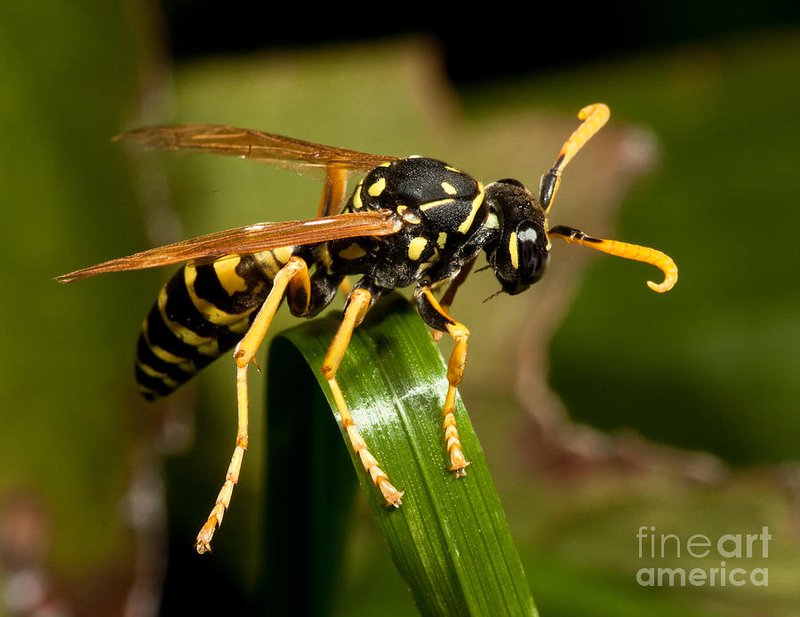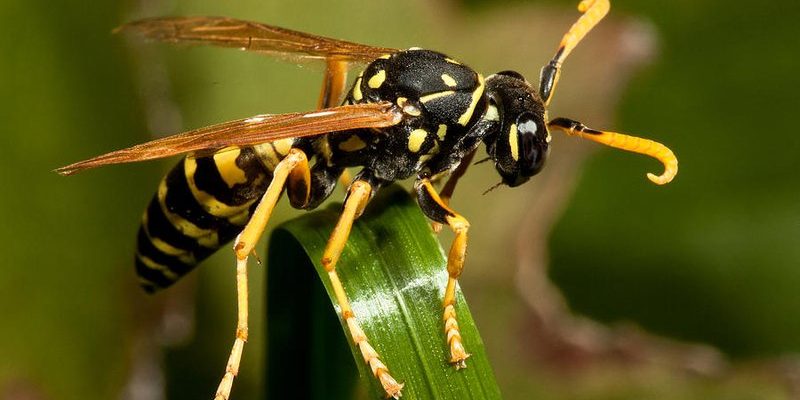
Have you ever seen a wasp buzzing around your garden and wondered what it’s up to? Among the many species of wasps, the Paper Wasp stands out, not just for its striking appearance but also for its fascinating behavior. These social insects, with their slender bodies and long legs, are often spotted constructing beautiful nests that resemble a cluster of paper honeycombs.
But what makes the Paper Wasp so interesting? Well, these wasps play a crucial role in our ecosystem, from pollination to natural pest control. Think of them as building contractors, tirelessly working to create their homes while also keeping other insect populations in check. If you’ve ever been curious about these remarkable creatures, you’re in for a treat!
What is a Paper Wasp?
The Paper Wasp is part of the family Polistes, which includes various species known for their unique nesting habits. These wasps are often a bit more docile compared to their more aggressive cousins, like yellow jackets. They’re typically brown or yellow, with some having vivid patterns that make them easy to spot. What sets them apart is their nesting material. Paper Wasps create their nests from a substance they produce by chewing wood fibers and mixing them with their saliva, creating a paper-like texture.
You might be surprised to learn that these nests can hold up to hundreds of wasps. Unlike bees, which tightly pack their hives, Paper Wasp nests are open and exposed, allowing you to see the individual cells where the larvae develop. This unique structure makes them fascinating subjects for observation, though it’s advisable to keep a safe distance, as they can sting when threatened.
Physical Characteristics
When it comes to appearance, Paper Wasps have distinct features that make them easily recognizable. They typically range from about 0.5 to 1 inch in length, with slender bodies and long legs that give them a graceful look as they fly. The top of their bodies may display various shades of yellow, brown, or even red, adorned with dark markings that help identify the specific species.
One of the striking aspects of their anatomy is their elongated waist, which differentiates them from other wasps. Also, their wings are long and narrow, providing them with excellent maneuverability. Their compound eyes are large and enable them to spot movement and potential threats from a distance. This unique physical design not only aids in survival but also adds to their charm as they flit about in the late summer sun.
Habitat and Nesting Habits
Paper Wasps are adaptable creatures that can thrive in various environments. You might find them in gardens, parks, and wooded areas, often drawn to places with plenty of plants and flowers. Their nests can be found hanging from tree branches, eaves of buildings, or even under porch ceilings. The choice of location is strategic; it provides shelter from predators and access to food sources.
The nests themselves are quite a sight to behold. Typically built in clusters, they resemble a delicate network of hexagonal cells, which serve as the nursery for the queen’s offspring. As they work tirelessly to construct and maintain their nests, Paper Wasps find themselves contributing to the ecosystem by pollinating flowers and controlling insect populations.
| Common Name | Paper Wasp |
| Size | 0.5 to 1 inch |
| Color | Brown, yellow, or red with dark markings |
| Habitat | Gardens, parks, wooded areas |
| Diet | Nectar, small insects |
| Lifespan | About 12 to 22 days for workers; queens can live several months |
Diet and Feeding Habits
Now, let’s talk about what these wasps eat. Paper Wasps are omnivorous, which means their diet includes both plant matter and protein sources. They primarily feed on nectar from flowers, which provides them with the sugar they need for energy. This sweet diet makes them important pollinators in the ecosystem.
In addition to nectar, they actively hunt for insects, especially caterpillars and other soft-bodied creatures, to feed their larvae. Essentially, they’re like nature’s little pest controllers, helping keep the balance in the garden by reducing the number of harmful insects. It’s a win-win situation; as they hunt for food, they also help pollinate your favorite flowers!
Behavior and Social Structure
Paper Wasps are social insects, living in communities that can consist of anywhere from a few dozen to a few hundred individuals. Their colonies are typically founded by a single queen, who is responsible for laying eggs and managing the colony’s activities. Worker wasps, usually females, take on the responsibility of building and maintaining the nest, foraging for food, and caring for the young.
Interestingly, unlike bees, Paper Wasp colonies do not have a rigid hierarchy. Instead, they exhibit more fluid roles within the community. This means that if the queen is lost, another female may step up to take her place. You might say that the Paper Wasp colony operates like a well-coordinated team, where everyone pitches in to ensure the survival of their community.
Stinging and Defense Mechanisms
It’s essential to address the topic of stinging because, like many wasps, Paper Wasps can sting if they feel threatened. However, their first course of action is usually to fly away rather than attack. The sting can be painful, but it’s not typically life-threatening unless someone has a severe allergic reaction. If you’re ever close to their nest, be sure to take caution and respect their space.
Interestingly, Paper Wasps have a fascinating method of communication. They use pheromones to signal danger to other colony members. So, if one wasp feels threatened, it can alert others, escalating the possibility of a defensive response. This intrinsic connection within the colony is vital for their survival, emphasizing the importance of working together in the wild.
Benefits of Paper Wasps
You might be surprised to learn that Paper Wasps provide numerous benefits to humans and the environment. As natural pest controllers, they help keep garden pests in check, which can reduce the need for chemical pesticides. This not only helps your garden thrive but also protects beneficial insect populations.
In addition to their pest control abilities, Paper Wasps play a crucial role in pollination. As they feed on nectar, they inadvertently transport pollen from flower to flower, helping plants reproduce. This contribution is vital for maintaining biodiversity and ensuring that many of our favorite fruits and vegetables can grow. So, the next time you see a Paper Wasp buzzing around, remember they’re working hard behind the scenes for the environment.
Common Misconceptions
Despite their many benefits, Paper Wasps often get a bad reputation. Many people assume that all wasps are aggressive and should be feared. However, this isn’t entirely true. While it’s wise to be cautious around any wasp, Paper Wasps are generally more docile compared to other species, like yellow jackets. They’re really more interested in building their nests and finding food than bothering humans.
Another misconception is that all Paper Wasps can sting multiple times. Unlike bees, which can only sting once and die afterward, wasps can sting repeatedly without losing their stinger. So, caution is always best, but don’t assume they’ll attack unless they’re provoked. Recognizing their true nature can help ease fears and encourage a more harmonious coexistence with these fascinating insects.
How to Coexist with Paper Wasps
If you find a Paper Wasp nest near your home, you don’t necessarily need to panic. While it’s important to respect their space, you can also adopt some strategies for coexistence. If the nest is in a high-traffic area, consider relocating it or contacting a professional to do so safely. On the other hand, if it’s in a less-obtrusive spot, you might choose to leave it be.
It’s also a good idea to avoid leaving food out, especially sugary items, as this can attract wasps. If you’re gardening, try planting flowers that attract beneficial insects to create a balanced ecosystem. Understanding their habits will allow you to share your space harmoniously without fear. After all, these industrious insects play a vital role in nature!
In a nutshell, the Paper Wasp is a remarkable insect that contributes significantly to our ecosystem. From their unique nesting properties to their role in pollination and pest control, these wasps are more than just stingers. They are, in many ways, unsung heroes of the garden.
So, the next time you spot one flitting about, appreciate its contributions instead of fearing its presence. By understanding and respecting these fascinating creatures, you can foster a relationship that benefits both you and the Paper Wasp.
FAQ
Are Paper Wasps aggressive towards humans?
Generally, Paper Wasps are not aggressive and tend to avoid confrontation. They prefer to flee rather than sting. However, if they feel their nest is threatened, they may defend it. It’s best to observe from a distance and avoid provoking them.
What do Paper Wasps eat?
Paper Wasps primarily feed on nectar and sugary substances found in flowers. They also hunt for small insects to feed their larvae, making them effective natural pest controllers in gardens.
How long do Paper Wasps live?
The lifespan of a Paper Wasp varies; workers typically live around 12 to 22 days. However, the queen can live several months, especially if the conditions are favorable.
Can Paper Wasps be beneficial?
Yes! Paper Wasps are beneficial as they help control pest populations and pollinate flowers. Their presence can lead to a healthier garden ecosystem.
How do I safely remove a Paper Wasp nest?
If a nest poses a threat, it’s best to contact a professional. If you decide to do it yourself, do so in the evening when wasps are less active, wearing protective clothing, and using a spray designed for wasps.
What is the best way to attract Paper Wasps to my garden?
Attracting Paper Wasps involves planting a variety of flowers for nectar. Consider planting marigolds, sunflowers, and herbs like basil and mint, which are known to attract them.
Do Paper Wasps have any natural predators?
Yes, Paper Wasps can fall prey to birds, other insects, and even some mammals. These predators help keep their populations balanced in the ecosystem.
How can I tell the difference between Paper Wasps and other wasps?
Paper Wasps have a distinctive long, slender body with a narrow waist and long legs. Their nests are also open and umbrella-shaped, unlike the compact nests of yellow jackets.
Are Paper Wasps solitary or social insects?
Paper Wasps are social insects, living in colonies that can range from a few individuals to over a hundred. They work collaboratively to build nests and care for their young.
Do Paper Wasps hibernate in winter?
Yes, Paper Wasp colonies do not survive the winter. Only fertilized queens will hibernate, emerging in spring to start new colonies, while the rest of the colony dies off.

